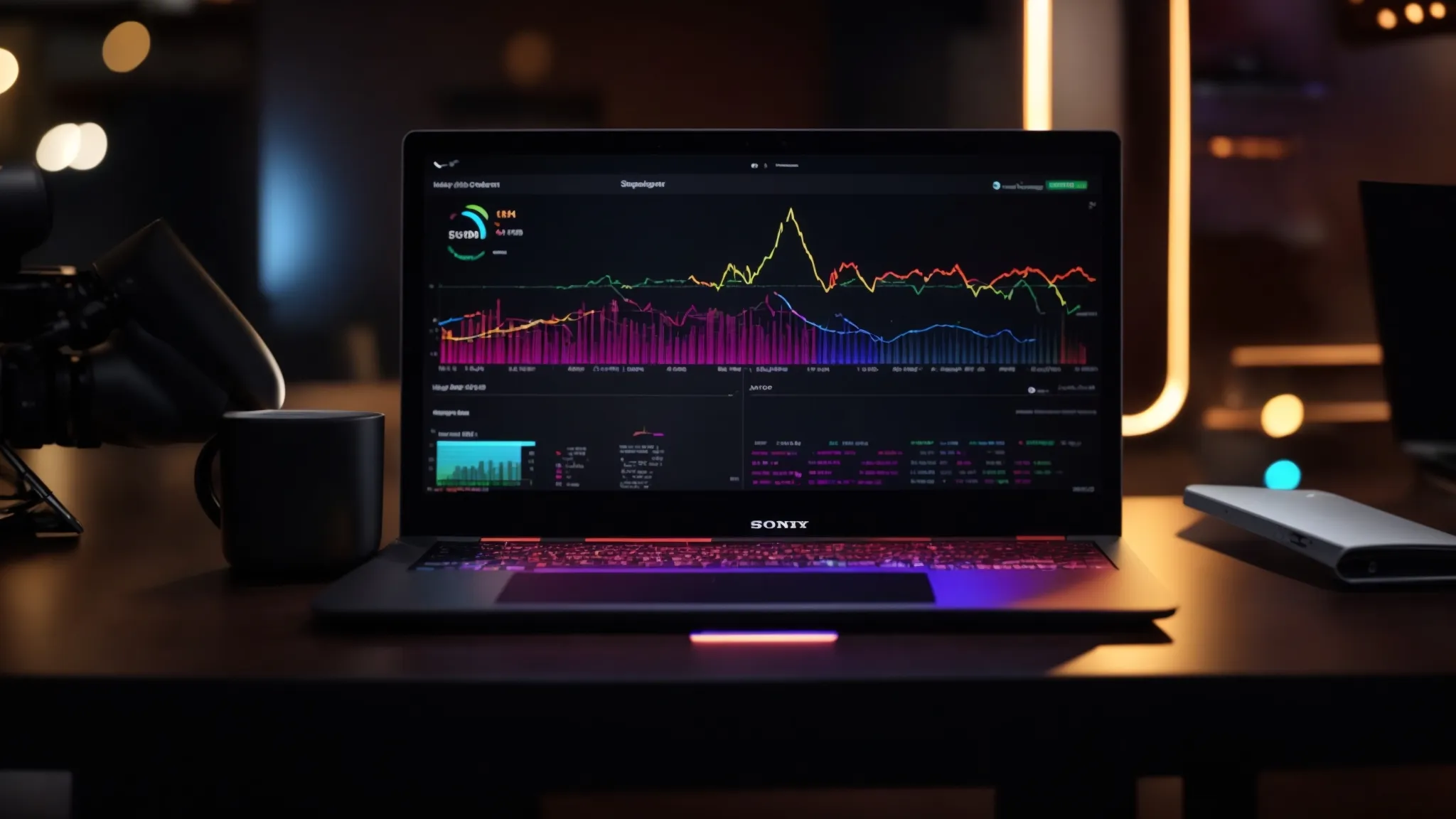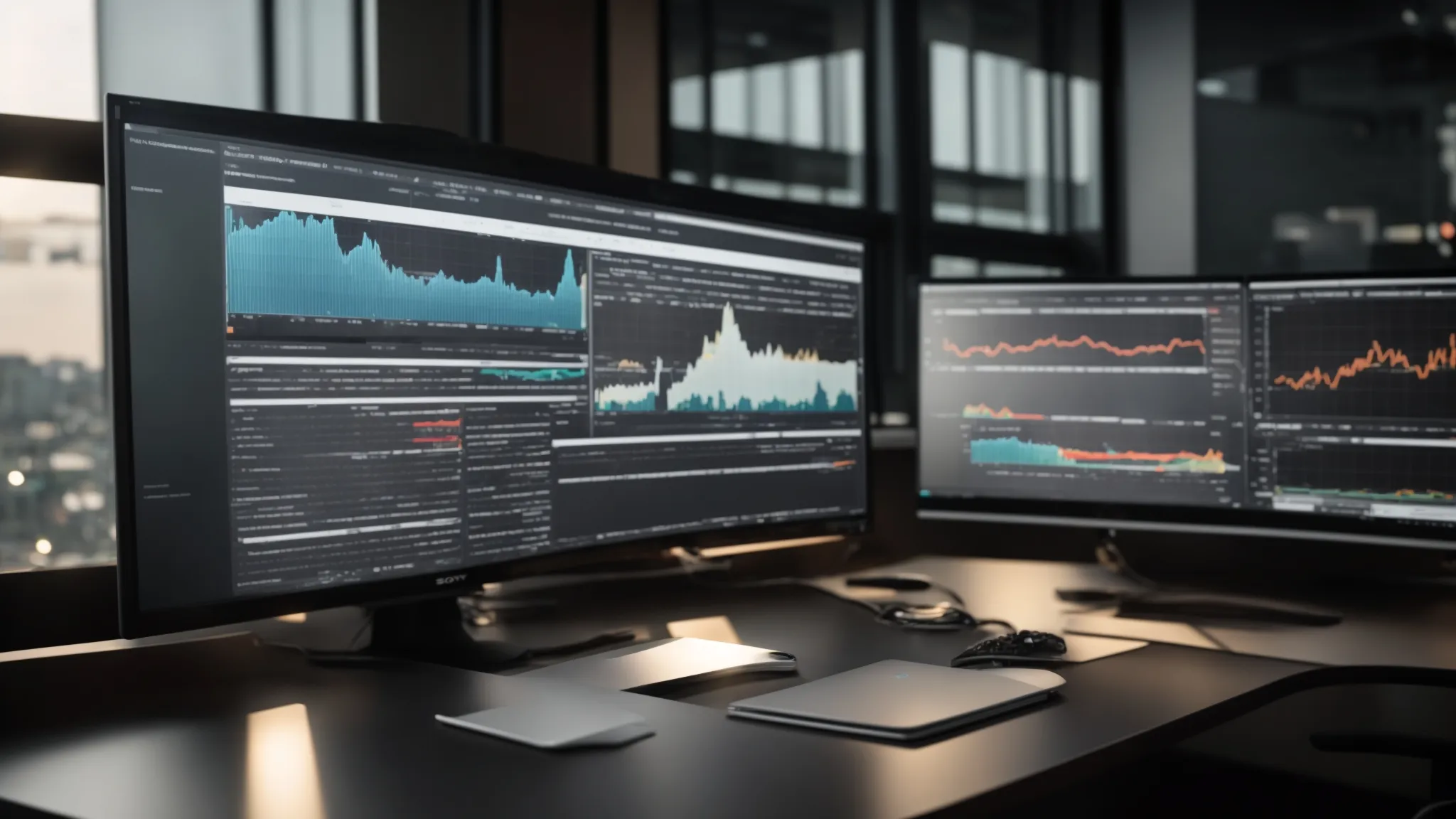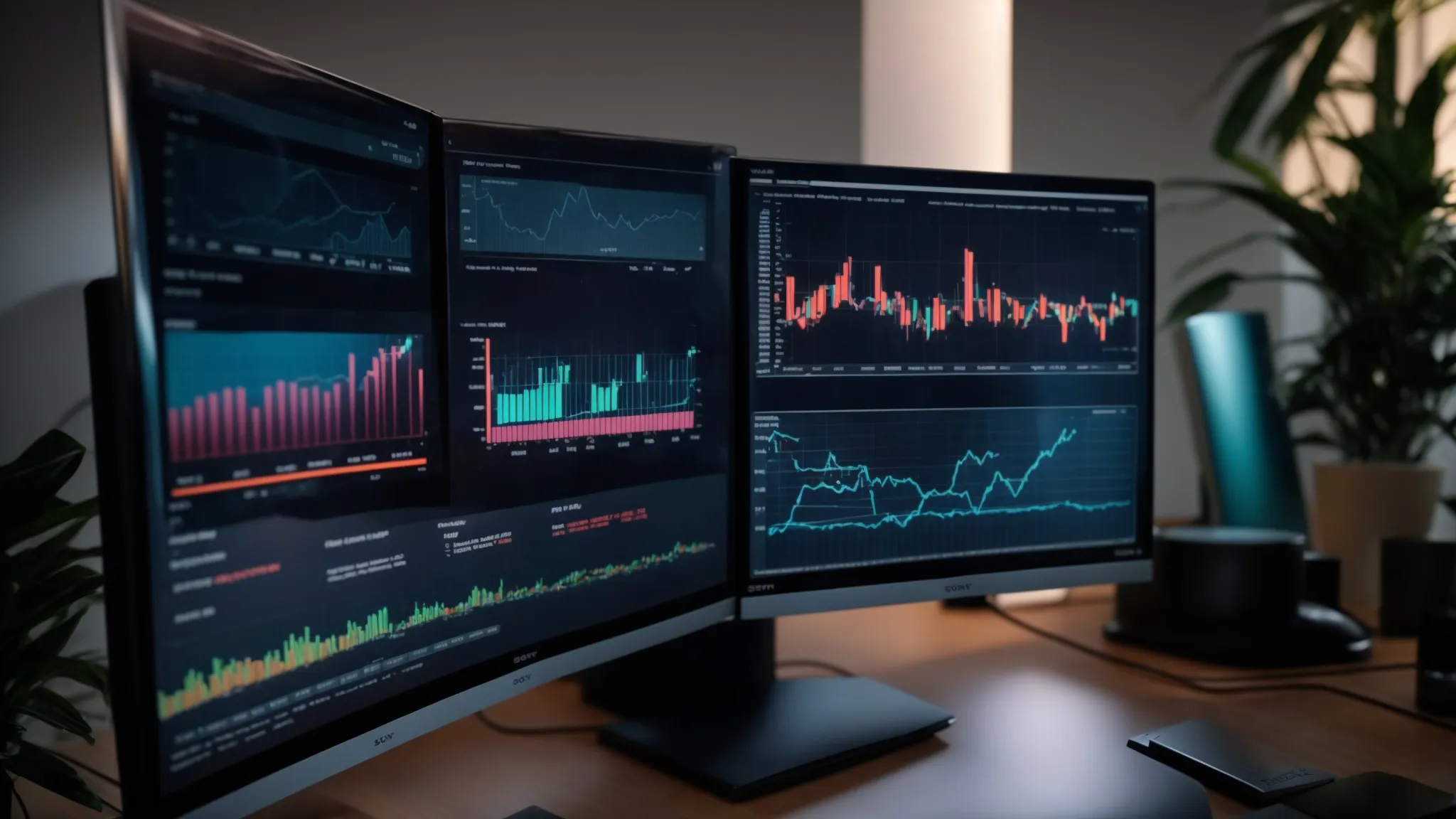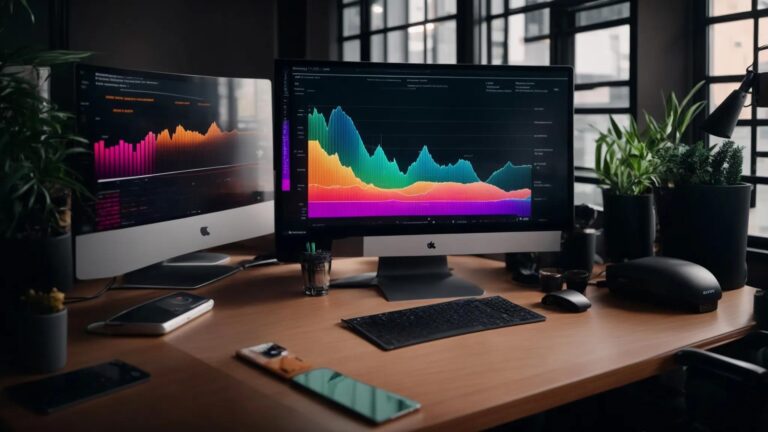Heads Up: When you purchase through links on our site, we may earn an affiliate commission at no cost to you.
Tracking SEO performance is crucial for understanding how well your website ranks in search engines, how users interact with your content, and whether your SEO strategies are delivering a strong return on investment (ROI). Without proper tracking, it’s impossible to know what’s working and what needs improvement.
Businesses that invest in SEO tracking can optimize their content marketing, keyword strategy, and site usability to increase organic search results and visibility. Using tools like Google Analytics, Google Search Console, and SEMrush, you can measure essential metrics like bounce rate, backlink profile, conversion rate, and keyword rankings.
This guide will walk you through why tracking SEO performance is essential, the key metrics to monitor, and the best tools for analyzing your data. By the end, you’ll have a clear understanding of how to refine your SEO strategy for maximum success.
Why Tracking SEO Performance is Essential

Monitoring SEO performance is more than just checking rankings—it’s about understanding user behavior, site engagement, and ROI. Without tracking, businesses may continue using ineffective strategies, wasting time, budget, and resources. Below are the key reasons why SEO tracking is crucial.
1. Measuring ROI and Search Visibility
SEO success isn’t just about ranking on Google’s search engine results page (SERP)—it’s about measuring the impact of organic traffic on your business’s bottom line.
- SEO provides long-term ROI by improving visibility, brand awareness, and website authority.
- Tracking organic search results helps businesses identify which pages drive the most traffic and conversions.
- Comparing SEO performance vs. paid marketing (e.g., Google Ads) ensures your budget is allocated effectively.
How to Measure ROI from SEO:
- Use Google Analytics to track organic traffic conversions (leads, sales, signups).
- Monitor search engine rankings for high-value keywords.
- Compare cost per acquisition (CPA) vs. SEO investment.
2. Understanding User Behavior and Engagement
A well-optimized SEO strategy doesn’t just bring in traffic—it ensures visitors stay engaged and take action. Metrics like bounce rate, time on page, and scroll depth provide insights into how users interact with your site.
- A high bounce rate may indicate poor user experience, slow loading times, or irrelevant content.
- Tracking user engagement helps refine landing page optimization and content marketing strategy.
- Google Search Console insights show how users click, interact, and navigate your site.
Key User Engagement Metrics to Track:
| Metric | What It Measures | Why It Matters |
|---|---|---|
| Bounce Rate | Percentage of users who leave after viewing one page | High rates signal content or usability issues |
| Time on Page | How long do visitors spend on a page | Longer times indicate high-quality, engaging content |
| Pages Per Session | Average number of pages viewed per visit | More pages suggest strong internal linking and site navigation |
By tracking SEO performance and engagement metrics, businesses can improve website usability, customer experience, and search rankings.
- Instant feedback
- Valuable insights
- Actionable tips
Key Metrics to Track SEO Performance

Understanding which SEO metrics matter most can help businesses make data-driven decisions to improve organic search results, user experience, and overall marketing performance. Below are the key performance indicators (KPIs) that provide valuable insights into SEO success.
1. Organic Traffic and Search Engine Rankings
Organic traffic is the foundation of SEO performance tracking. It measures how many visitors land on your site from search engines without clicking on paid ads. Tracking search engine rankings for target keywords helps businesses understand their visibility and competitiveness in search results.
How to Track Organic Traffic & Rankings:
- Use Google Analytics to track traffic from organic search results under the Acquisition section.
- Monitor keyword rankings using Google Search Console, SEMrush, or Ahrefs.
- Compare ranking positions over time to measure SEO growth.
Why It Matters:
- Higher organic search rankings lead to more traffic, leads, and conversions.
- Helps identify opportunities for content updates and keyword optimization.
2. Bounce Rate and User Engagement Metrics
The bounce rate is the percentage of visitors who leave after viewing only one page. A high bounce rate suggests potential usability issues, slow page speed, or irrelevant content.
How to Monitor Bounce Rate & Engagement:
- Track bounce rate, time on page, and pages per session in Google Analytics.
- Analyze heatmaps and scroll depth reports using tools like Hotjar to assess engagement.
Why It Matters:
- Low engagement signals content quality issues, poor mobile usability, or slow page speeds.
- Improving on-page SEO and internal linking can reduce bounce rates.
3. Backlinks and Link Building Success
Backlinks remain one of the strongest ranking factors for search engine optimization. Tracking backlink growth, quality, and relevance is crucial to measuring the success of your link-building strategy.
How to Track Backlinks:
- Use Ahrefs, Moz, or SEMrush to analyze backlink profiles and referring domains.
- Monitor anchor text usage and domain authority of linking sites.
- Check for toxic backlinks that may require disavowing.
Why It Matters:
- Quality backlinks improve search rankings, credibility, and domain authority.
- Unnatural or spammy links can lead to Google penalties.
4. Keyword Performance and Content Effectiveness
Tracking keyword rankings and content performance ensures that your SEO strategy is aligned with search intent and target audience preferences.
How to Measure Keyword & Content Performance:
- Monitor keyword positions using Google Search Console or SEMrush.
- Analyze CTR (click-through rate) and impressions for search queries.
- Track social shares and engagement metrics to measure content reach.
Why It Matters:
- It helps businesses optimize existing content for better rankings.
- Identifies low-performing pages that need content refreshes.
By tracking these SEO metrics, businesses can make informed decisions to improve site performance, content effectiveness, and search engine visibility.
Best SEO Tracking Tools for Performance Monitoring
To effectively track SEO performance, businesses must use reliable SEO monitoring tools that provide insights into traffic, rankings, backlinks, and user engagement. The following tools help collect and analyze SEO data for informed decision-making.
1. Google Analytics for Traffic and Behavior Tracking
Google Analytics is a must-have tool for tracking organic search results, user behavior, and conversion rates. It helps businesses understand where their traffic is coming from and how visitors interact with their website.
Key Features:
- Tracks organic search traffic under the Acquisition > Organic Search report.
- Measures bounce rate, time on page, and pages per session for user engagement analysis.
- Allows businesses to set up conversion goals to track SEO-driven leads and sales.
Why It’s Important:
- Provides deep insights into user behavior and traffic sources.
- Helps businesses optimize SEO strategies based on performance trends.
2. Google Search Console for Search Visibility
Google Search Console (GSC) is essential for monitoring search engine visibility, indexing issues, and keyword performance. It helps identify technical SEO problems that may impact rankings.
Key Features:
- Tracks search queries, CTR (click-through rate), and impressions for each page.
- Identifies crawl errors, sitemap issues, and mobile usability problems.
- Provides insights into Googlebot activity and indexing status.
Why It’s Important:
- Ensures that web pages are properly indexed in search engines.
- Helps businesses optimize URLs, metadata, and technical SEO.
3. SEMrush and Ahrefs for Competitor Analysis
Both SEMrush and Ahrefs provide advanced SEO analytics, competitor insights, and backlink tracking. They help businesses stay ahead of the competition by monitoring keyword rankings, link-building efforts, and content gaps.
Key Features:
- Tracks keyword rankings and organic traffic trends.
- Analyzes competitor SEO strategies and identifies content opportunities.
- Monitors backlinks and referring domains for link-building success.
Why They’re Important:
- Help businesses improve their SEO strategy based on competitive insights.
- Provide in-depth SEO audits and performance benchmarking.
4. Lighthouse for Page Speed and User Experience
Google Lighthouse is a free tool used to measure website performance, accessibility, and SEO factors.
Key Features:
- Analyzes page speed and Core Web Vitals.
- Identifies usability issues impacting user experience.
- Provides recommendations for technical SEO improvements.
Why It’s Important:
- Ensures web pages load quickly and meet Google’s performance standards.
- It helps businesses improve mobile-friendliness and page experience signals.
5. Moz and HubSpot for SEO Insights
Both Moz and HubSpot provide tools for tracking SEO success, domain authority, and keyword research.
Key Features:
- Measures domain authority (DA) and page authority (PA).
- Tracks SEO progress over time with detailed reporting dashboards.
- Provides keyword research and content marketing insights.
Why They’re Important:
- Help businesses track SEO progress and long-term growth.
- Provide actionable insights for improving search visibility and content effectiveness.
By leveraging these SEO tracking tools, businesses can monitor their site performance, identify areas for improvement, and optimize their SEO strategy for maximum results.
How to Set Up an SEO Dashboard for Effective Monitoring

A well-organized SEO dashboard allows businesses to track key SEO metrics in one place, making it easier to analyze performance and make data-driven decisions. Setting up an SEO dashboard streamlines reporting, competitor analysis, and performance tracking.
1. Choosing the Right SEO KPIs for Your Business
Before setting up an SEO dashboard, it’s important to identify the most relevant KPIs for your goals. Different businesses focus on different SEO success factors, such as organic traffic growth, keyword rankings, or conversion rates.
Key SEO Metrics to Include in Your Dashboard:
- Organic Traffic – Tracks visitors from search engines.
- Keyword Rankings – Monitors SERP positions for target keywords.
- Bounce Rate & Engagement – Measures user behavior and content effectiveness.
- Backlink Growth – Tracks link-building efforts and referring domains.
- Conversion Rate Optimization (CRO) – Measures leads, signups, or purchases generated from SEO.
Choosing KPIs based on business goals ensures that your dashboard focuses on high-impact metrics.
2. Using Google Data Studio for SEO Reporting
Google Data Studio is a powerful tool for creating custom SEO dashboards that pull data from multiple sources, including Google Analytics, Google Search Console, and SEMrush.
How to Set Up an SEO Dashboard in Google Data Studio:
- Connect Data Sources – Integrate Google Analytics, Search Console, and third-party SEO tools.
- Customize Reports – Add charts for organic traffic trends, keyword performance, and backlink data.
- Automate SEO Reports – Schedule weekly or monthly reports to track performance over time.
A well-structured SEO dashboard makes it easier to monitor trends, detect issues, and optimize strategies in real-time.
3. Automating SEO Tracking for Better Insights
Manually tracking SEO performance can be time-consuming. Using SEO automation tools helps businesses streamline data collection and analysis.
Best SEO Automation Tools:
- Google Alerts – Monitors brand mentions and backlinks.
- SEMrush and Ahrefs Alerts – Tracks ranking changes, competitor movements, and link-building progress.
- Screaming Frog SEO Spider – Automates site audits and detects SEO issues.
Automating SEO tracking reduces manual effort while ensuring businesses stay informed about SEO performance fluctuations.
By setting up an SEO dashboard, businesses can track SEO metrics efficiently, automate performance monitoring, and refine their SEO strategy for continuous improvement.
Common SEO Tracking Mistakes to Avoid

Even with the best SEO tools and dashboards, many businesses make critical mistakes when tracking their SEO performance. These errors can lead to misinterpreted data, ineffective strategies, and missed opportunities for growth. Here are some of the most common SEO tracking mistakes and how to avoid them.
1. Relying Only on Ranking Data
While keyword rankings are an important metric, they shouldn’t be the only focus when tracking SEO success. Many businesses obsess over SERP positions without considering user engagement, conversions, or ROI.
Why This is a Mistake:
- Rankings fluctuate due to search algorithm updates, personalization, and location-based results.
- A high-ranking keyword doesn’t always mean high-quality traffic or conversions.
How to Fix It:
- Combine ranking data with organic traffic, bounce rate, and conversion rates for a complete SEO analysis.
- Focus on search intent to ensure your keywords align with user needs.
2. Ignoring Mobile and Local Search Performance
With Google’s mobile-first indexing, websites must prioritize mobile SEO performance. Additionally, businesses serving local markets must track their local search rankings and visibility.
Why This is a Mistake:
- Many SEO tracking reports focus only on desktop rankings rather than mobile search trends.
- Local businesses often ignore how they appear in Google My Business and map results.
How to Fix It:
- Use Google Search Console to analyze mobile usability and mobile-specific rankings.
- Track Google My Business insights, local keyword performance, and citation consistency.
3. Failing to Adjust Strategy Based on Data Analysis
Collecting SEO data is useless if businesses don’t act on the insights. Some companies track metrics but fail to adjust their content marketing and technical SEO strategy accordingly.
Why This is a Mistake:
- SEO tracking should be actionable, meaning insights should lead to optimizations.
- Not updating content or refining keyword strategies based on data leads to stagnant performance.
How to Fix It:
- Regularly review SEO performance metrics and adjust content, keyword targeting, and link-building efforts.
- Conduct quarterly SEO audits to ensure ongoing site optimization.
By avoiding these common SEO tracking mistakes, businesses can ensure their SEO strategy is data-driven, optimized, and continually improving.
Future Trends in SEO Performance Tracking
As search engines evolve, the way we track SEO performance must also adapt. Emerging technologies, changes in Google’s algorithms, and shifts in user behavior are shaping the future of SEO monitoring and analytics. Here are the key trends that will define SEO tracking in the coming years.
1. AI and Machine Learning in SEO Analytics
Artificial intelligence (AI) and machine learning are transforming how businesses analyze SEO data. Google’s search algorithms are becoming smarter, using AI to determine relevance, user experience, and content quality.
How AI is Changing SEO Tracking:
- AI-powered tools like Google’s RankBrain assess user intent and content relevance.
- Predictive analytics help businesses forecast SEO trends and ranking fluctuations.
- AI-driven insights recommend content improvements based on user behavior patterns.
How to Adapt:
- Use AI-powered SEO tools like Surfer SEO, Clearscope, and SEMrush’s AI features.
- Leverage AI-driven content recommendations to optimize for search intent and engagement.
2. Real-Time SEO Monitoring and Automation
Traditional SEO reporting is often static and retrospective, meaning businesses review reports only after data has been collected. Future SEO tracking will focus on real-time analytics and automation.
Why Real-Time Tracking is Important:
- Immediate alerts help businesses react to ranking drops, traffic declines, or indexing issues faster.
- Automation allows for continuous optimization without manual intervention.
How to Adapt:
- Use Google Search Console’s real-time indexing reports.
- Set up automated alerts in SEMrush, Ahrefs, and Google Analytics for performance fluctuations.
3. Voice Search and Semantic SEO Tracking
With the rise of voice search and natural language processing (NLP), traditional keyword tracking is becoming less relevant. Users now search in a more conversational and intent-based manner.
How Voice Search is Changing SEO Tracking:
- Searches are shifting from short keywords to long-tail, question-based queries.
- Featured snippets and structured data are becoming key drivers of search visibility.
How to Adapt:
- Focus on tracking question-based keywords and voice-friendly content in Google Search Console.
- Optimize for position zero (featured snippets) and conversational search queries.
4. User Experience (UX) Metrics Becoming Primary SEO Indicators
Google’s Core Web Vitals update has made page speed, mobile usability, and engagement metrics critical ranking factors. SEO tracking is shifting from just keywords to user-centric metrics.
Key UX Metrics to Track:
- Largest Contentful Paint (LCP) – Measures how fast the main content loads.
- First Input Delay (FID) – Tracks how quickly users can interact with the site.
- Cumulative Layout Shift (CLS) – Measures unexpected layout shifts affecting usability.
How to Adapt:
- Use Google Lighthouse and PageSpeed Insights to track UX metrics.
- Optimize website speed, mobile usability, and navigation for better rankings.
5. SEO Attribution and Multi-Touch Tracking
Modern SEO tracking is no longer just about last-click attribution. Businesses need to understand how different marketing channels contribute to SEO success.
Key Trends in SEO Attribution:
- Multi-touch attribution models help businesses measure how different SEO activities contribute to conversions.
- Google Analytics 4 (GA4) focuses more on user journeys across devices and channels.
How to Adapt:
- Use Google Analytics 4’s new attribution reports to track SEO contributions to revenue.
- Implement UTM tracking for better analysis of organic search traffic sources.
By staying ahead of these SEO trends, businesses can ensure that their performance-tracking methods remain accurate, effective, and aligned with evolving search algorithms.
Frequently Asked Questions
Why is tracking SEO performance important?
It helps measure rankings, traffic, engagement, and conversions to refine SEO strategies.
What are the key SEO metrics to track?
Organic traffic, keyword rankings, bounce rate, backlinks, and conversion rates.
Which tools are best for SEO tracking?
Google Analytics, Google Search Console, SEMrush, Ahrefs, and Moz.
How can I improve my bounce rate?
Optimize page speed, mobile usability, and content relevance.
How often should I check SEO performance?
Weekly for rankings, quarterly for full audits.
What is SEO attribution?
It tracks SEO’s role in lead generation and conversions.
Why does Core Web Vitals matter?
It affects rankings based on page speed, UX, and interactivity.
How does AI impact SEO tracking?
AI helps with real-time monitoring, ranking predictions, and content optimization.
What are future trends in SEO tracking?
AI-driven analytics, voice search tracking, and UX-based ranking factors.
Conclusion
Tracking SEO performance is essential for understanding how well your website ranks, how users interact with your content, and whether your SEO strategies are delivering measurable results. By monitoring key metrics such as organic traffic, keyword rankings, bounce rate, backlinks, and user engagement, businesses can refine their strategies for better search engine visibility and higher conversions.
Businesses can gain actionable insights into their SEO success using powerful tools like Google Analytics, Google Search Console, SEMrush, and Ahrefs. Setting up an SEO dashboard helps track progress efficiently, while automation ensures continuous, real-time performance monitoring.
As SEO evolves, focusing on trends like AI-powered SEO tracking, real-time analytics, voice search optimization, and UX metrics will be critical for staying ahead in search rankings. Businesses that consistently analyze, adjust, and optimize their SEO efforts will continue to see long-term growth and better return on investment from their digital marketing efforts.














